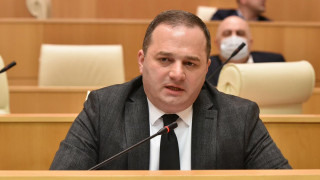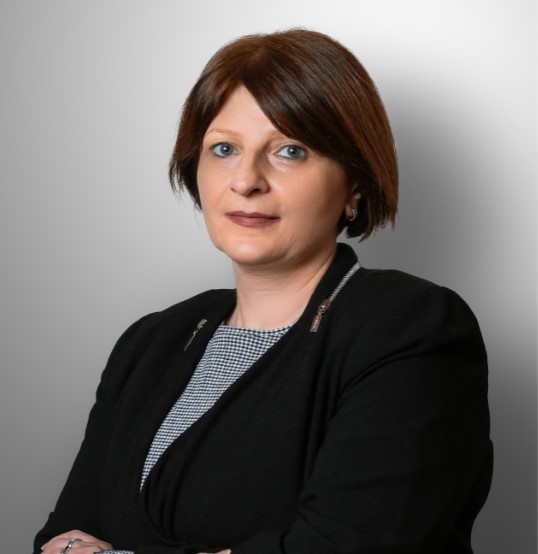Shalva Kereselidze: “Funds allocated within the scope of the Village Support Programme are not sufficient and do not enable a village to do the things it wants.”
Verdict: FactCheck concludes that Shalva Kereselidze’s statement is TRUE.
Resume: In accordance with the decision of the Government of Georgia, the Village Support Programme was launched in 2009 and has continued since 2016. In 2017-2018, the programme was temporarily paused. Later, it was restored in 2019 under renewed conditions which implied that all projects as part of the programme had to be carried out with a simplified procurement.
The budget of the Village Support Programme envisions GEL 10,000 to GEL 20,000 per each village, depending on the size of the population. The programme also has pre-determined types of projects which villages are allowed to carry out as part of this programme.
As we see, the allocations for each village are small and carrying out construction/rehabilitation work envisioned by the programme will become more difficult given inflation rate in the country. Apart from the insufficient budget, another of the programme’s shortcomings is the limited choices for the villages. As a result, there is a good chance that a village will be unable to solve a local problem and this undermines the efficacy of the programme.
Given all of the aforementioned circumstances, Shalva Kereselidze’s statement is TRUE.
Of additional note is that any attempt to address these shortcomings through a budgetary increase or changing the terms and the conditions as to how the programme’s money is used will be an artificial decision and only create an illusion that a rural community is independently able to determine and fund its priorities. The optimal and natural solution for this issue would be more decentralisation when local administrations will be in charge of defining priorities and distributing the necessary funds.
Analysis
Shalva Kereselidze, MP from the Georgian Dream, spoke about the shortcomings of the Village Support Programme and stated: “Funds allocated within the scope of the Village Support Programme are not sufficient. The programme has some limitations which do not allow a village to do the things which it wants… The programme is wonderful but the money is so little the efficacy is lost. As a result, we have money which is not spent and a situation where a village does not accomplish what it wants to get done.”
The Government of Georgia approved the Village Support Programme in 2009. In 2009-2011, the programme’s budget was GEL 40 million whilst it increased by GEL 50 million in 2012-2016. In the next two years, the programme was halted and then relaunched in 2019 under changed conditions. Until 2017, a tender needed to be announced for each project and a simplified procurement was only applied in exceptional cases. Since 2019, all projects are implemented through a simplified procurement.
The Village Support Programme is a sub-programme of a regional project fund managed by the Ministry of Regional Development and Infrastructure. As part of the Village Support Programme, the government provides funding for small infrastructural projects in villages. Under this programme, each village gets funding from GEL 10,000 to GEL 20,000 based on the number of people living there.
The selection and the funding criteria for the projects that are to be carried out with the Village Support Programme’s money were defined by an ordinance of the Government of Georgia adopted in 2018.
According to the ordinance, the amount of money per each village is determined in line with the following principle:
• GEL 10,000 is allocated for a village where the number of inhabitants is under 200
• GEL 12,000 is allocated for a village where the number of inhabitants is from 201 to 400
• GEL 16,000 is allocated for a village where the number of inhabitants is from 401 to 1,000
• GEL 20,000 is allocated for a village where the number of inhabitants is over 1,000
The total amount of allocations for each municipality is calculated in line with this principle.
The projects that are funded as part of this programme are as follows: drinking water systems, irrigation systems, floodwater canals, river bank protection work, roads, bridges, street lights, creating recreational areas adjacent to schools, pre-school establishments and relevant inventory, ambulatory facilities, cultural facilities, sport infrastructure, fields, squares, windmills and fences around cemeteries.
In regard to the selection of projects which are to be carried out as part of the programme, the aforementioned ordinance says that a project will be selected at a general assembly which is convened by the mayor of municipality if there are 500 voters living in the settlement. If the number of registered voters in a settlement is from 501 to 1,000, the project is selected through a consultation with the voters where at least 100 voters are required to participate. In the case of more than 1,000 voters living in a settlement, the projects are again selected on the basis of a consultation with the voters, although only 200 voters are required to participate.
If a municipality cannot fully spend the funds allocated as part of the programme before 1 May of a current year, half of the unspent money will be distributed to another municipality and a commission will decide whether or not to give the other half of the unspent money to the same municipality (the rule of distribution is defined by an ordinance of the Government of Georgia dated 7 February 2013).
As we see, within the scope of the Village Support Programme at least GEL 10,000 and at most GEL 20,000 can be allocated for one village with the exact amount depending on the number of dwellers in the village. The programme also determines the types of infrastructural projects that villages can carry out. If we take a look at the list of projects, it is evident that the maximum amount of GEL 20,000 makes it difficult to carry out this type of work, particularly in light of inflation in the country. A municipality is also eligible to carry out a project within the scope of the Village Support Programme with co-funding (contributing a maximum of 100% of the total value of the project). However, co-funding can be allocated for only a handful of villages given the small budgets. This may result in a situation that a village will be unable to implement a project which is indeed needed and where funds are also sufficient but instead, funds may turn out to be insufficient for projects which meet the programme’s criteria. This can be considered as the programme’s main shortcoming when a village cannot spend all of the allocated funds or it spends them less efficiently (instead of losing the funds entirely, the village spends the money on fixing an issue which is of a lesser priority).
Given all of the aforementioned circumstances, MP Shalva Kereselidze’s statement is TRUE.
FactCheck would like to draw our readers’ attention to one more factor. As mentioned earlier, the programme was halted for two years and was resumed in 2019 under changed conditions; that is, all of the projects as part of the programme are carried out through a simplified procurement.
Transparency International – Georgia believes that this factor reduces transparency and competition and increases corruption risks.
We would like to add that under the already small budget, the lack of competition does not provide an opportunity to save money.








